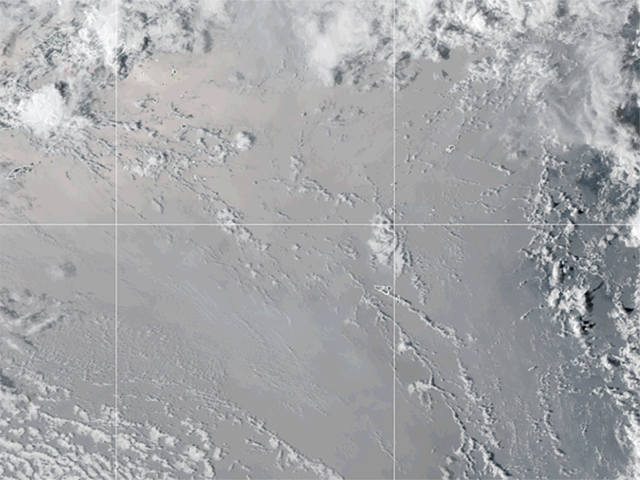Tonga Eruption Blasted Unprecedented Amount of Water Into Stratosphere
When the Hunga Tonga-Hunga Ha’apai volcano erupted on Jan. 15, it sent a tsunami racing around the world and set off a sonic boom that circled the globe twice. The underwater eruption in the South Pacific Ocean also blasted an enormous plume of water vapor into Earth’s stratosphere – enough to fill more than 58,000 Olympic-size swimming pools. The sheer amount of water vapor could be enough to temporarily affect Earth’s global average temperature.
“We’ve never seen anything like it,” said Luis Millán, an atmospheric scientist at NASA’s Jet Propulsion Laboratory in Southern California.
Now we find that the Hunga Tonga-Hunga Ha-apai eruption produced the largest global perturbation of stratospheric aerosols since the Pinatubo eruption in 1991 and the largest perturbation of stratospheric water vapour observed in the satellite era. Immediately after the eruption, water vapour radiative cooling dominated the local stratospheric heating/cooling rates, while at the top-of-the-atmosphere and surface, volcanic aerosol cooling dominated the radiative forcing. However, after two weeks, due to dispersion/dilution, water vapour heating started to dominate the top-of-the-atmosphere radiative forcing, leading to a net warming of the climate system.
Now, watch the greenies claim climate change on your SUV instead because they won't acknowledge things that occur in nature like this. It's more convenient to be all your fault to fulfill their agenda . . .
https://climate.nasa.gov/news/3204/tonga-eruption-blasted-unprecedented-amount-of-water-into-stratosphere/
Tonga Eruption Blasted Unprecedented Amount of Water Into Stratosphere
When the Hunga Tonga-Hunga Ha’apai volcano erupted on Jan. 15, it sent a tsunami racing around the world and set off a sonic boom that circled the globe twice. The underwater eruption in the South Pacific Ocean also blasted an enormous plume of water vapor into Earth’s stratosphere – enough to fill more than 58,000 Olympic-size swimming pools. The sheer amount of water vapor could be enough to temporarily affect Earth’s global average temperature.
“We’ve never seen anything like it,” said Luis Millán, an atmospheric scientist at NASA’s Jet Propulsion Laboratory in Southern California.
Now we find that the Hunga Tonga-Hunga Ha-apai eruption produced the largest global perturbation of stratospheric aerosols since the Pinatubo eruption in 1991 and the largest perturbation of stratospheric water vapour observed in the satellite era. Immediately after the eruption, water vapour radiative cooling dominated the local stratospheric heating/cooling rates, while at the top-of-the-atmosphere and surface, volcanic aerosol cooling dominated the radiative forcing. However, after two weeks, due to dispersion/dilution, water vapour heating started to dominate the top-of-the-atmosphere radiative forcing, leading to a net warming of the climate system.
Now, watch the greenies claim climate change on your SUV instead because they won't acknowledge things that occur in nature like this. It's more convenient to be all your fault to fulfill their agenda . . .
https://climate.nasa.gov/news/3204/tonga-eruption-blasted-unprecedented-amount-of-water-into-stratosphere/




